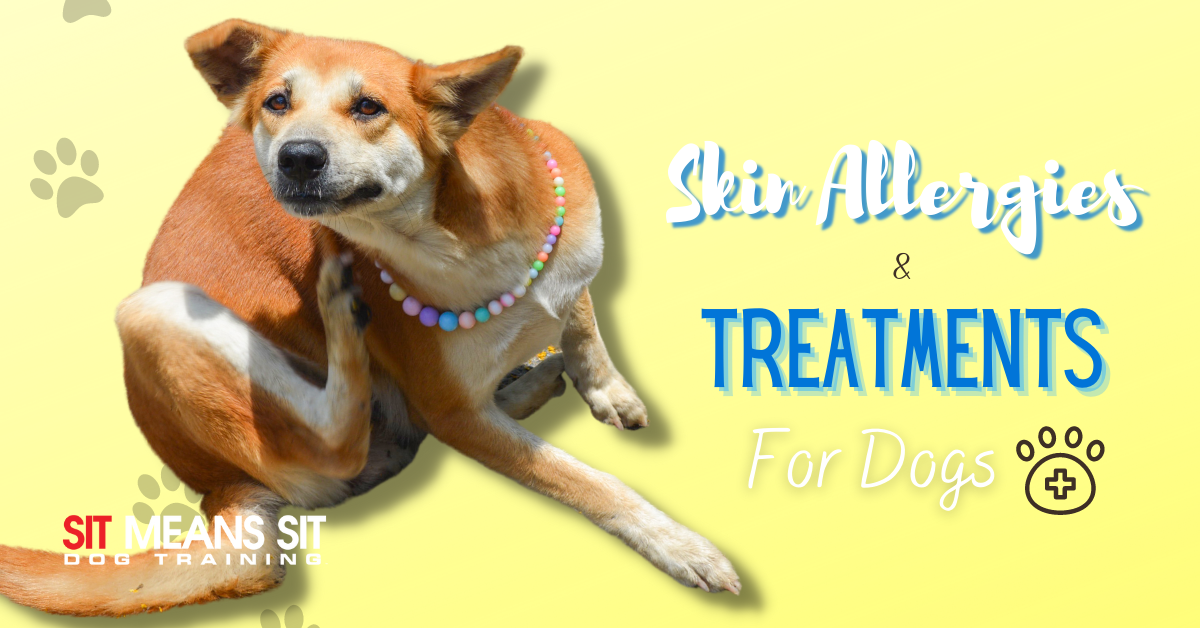
Common Dog Skin Allergies & Treatments
Changing weather patterns and seasons can cause allergies to increase, especially in our furry friends. Allergen spreaders like pollen, bug bites, dust, and mold can prompt reactions in dogs. Dogs that face various allergic reactions usually see the irritation in their skin, particularly on their feet and ears. Any skin-irritating allergy can lead to hot spots in dogs, which needs to be cared for gently. Here’s a list of common skin allergies and what to do for them:
Flea Bite Allergy
Dogs with flea bite allergies typically suffer from itchy skin around the body, especially on the rear end. One flea bite can spend your pup into an itching spiral, so it’s important to have preventative measures ready. Your vet can prescribe your dog a flea preventive product or you can find treatment options over-the-counter!
To keep your home flea-free to prevent allergens from running high, you can buy or DIY treatments for your house. Frequent vacuuming and cleaning out contaminated spaces or toys will help remove any existing flea cocoons, larvae, and eggs. You can also maintain a flea-free environment by keeping your grass short and getting nematodes, flea-eating worms, for your grassy lawn areas.
Atopic Allergy (Inhaled)
Atopic dogs tend to suffer from front-end itching of the face, chest, armpit, or foot area. They lick, chew, bite, or rub to ease the irritation. These dogs also are prone to chronic ear infections. The webbing in a dog’s paw can attract allergens that get trapped and cause itching throughout the entire body. Atopic dogs are diagnosed by veterinarians but dogs such as Pugs, Golden Retrievers, and Dalmations are more susceptible to atopic allergies.
Allergies can often be tested by a vet to see what exactly your dog is irritated by. Some vets will suggest immunotherapy, which is a series of allergy shots to boost immunity in your pup. Other treatment options could include supplements and suggestions of allergen-proof products and routines (such as eliminating dust or allergy-free shampoos).
Hot Spots
Moist pyotraumatic dermatitis, better known as hot spots, arise from a bug bite, itch, or sore on a dog’s skin. The affected area can turn raw and inflamed, growing up to twenty times its original size in a day. The extremely painful spot affects the top layer of the skin. It begins to ooze and mats the surrounding fur.
If the sore continues to grow or your dog appears to be in growing pain, seek the help of a vet. But it is possible to help heal hot spots at home.
Trim the fur around the spot and clean the affected area with a betadine-based product. It may be more easily cleaned with a spray solution or with cooled, steeped tea bags containing tannic acid. Treatment will help heal and soothe the sore, but if circumstances get worse, see a vet ASAP.
Treating Skin Allergens
If your dog suffers from skin allergies, the best medicine is usually prescribed or suggested by a veterinarian. But some good alternatives for treatment and skin-soothing is a cool water soak in a kiddie pool or incorporating an oatmeal-based rinse or shampoo! In between treatments, try consistently wiping off your pup’s paws when they go outside to get rid of any allergens that find their way in the toe webbing.
Check out this guide for more tips for relieving itchy skin!
